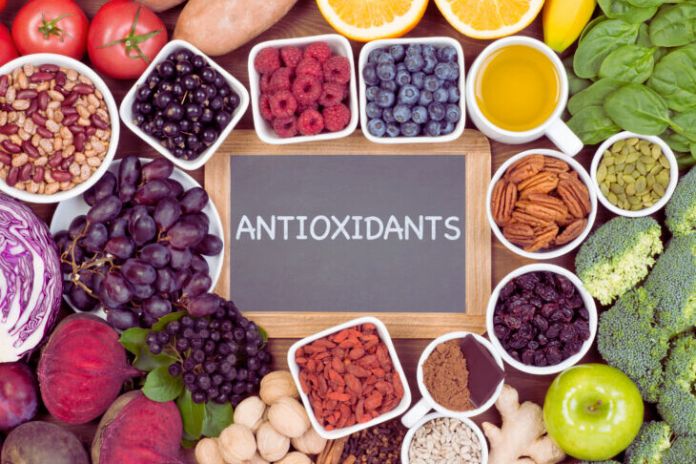At any given moment, countless chemical processes occur in your body. Cells receive substances such as oxygen and nutrients essential for survival.
However, these processes are much more complex. Due to our habits, cells can also receive substances that harm them. The repetition of these aggressions leads to the onset of inflammation, aging processes, and chronic diseases.
How to avoid these effects on the organism? Antioxidants aren’t the only option, but they can help. Please find out their importance and why to put them on your menu.
Why Do We Need Antioxidants?
Before we understand what antioxidants are, we must find out what they fight. For our body to function, we need the energy obtained through food.
However, after we ingest this energy, the organism has a whole distribution process.
Energy, while necessary, is dangerous. Outside our body, a lot of energy can cause fire or explosion. In our body, it also needs to be distributed carefully so as not to cause harm.
When something out of control happens in this process, oxygen combines with a high-energy electron, forming a superoxide, also known as the terrible free radical. This process is known as oxidative stress.
Chemically speaking, this free radical is an extremely unstable, reactive molecule, full of energy and capable of destroying our cells.
It breaks the membranes surrounding our cells, destroys internal structures, and manages to reach the DNA. There, it damages the genes and manages to cause mutations in the chromosomes that can lead to the development of several diseases, including cancer.
What Happens When We Don’t Have A Stock Of Antioxidants?
If an antioxidant is a weapon that fights free radicals, having a stock of them in our bodies would be interesting. But what happens when these substances are not available?
When there are not enough antioxidants, our body suffers from oxidative stress. The results of this process are aging and disease.
The results of this oxidation show up in various ways: the brown spots on the back of the hand are oxidized fat under the skin. Free radicals also attack neurons, causing loss of intellectual power, impairing our cognition, and causing diseases such as Parkinson’s or Alzheimer’s.
Signs of oxidative stress are also revealed in wrinkles, which are signs of aging (action of free radicals). They also oxidize cells and tissues of the different organs of the organism, which begin to present problems in their functioning – chronic diseases.
How To Replenish Our Stock Of Antioxidants?
Unfortunately, there is no way to stock up on antioxidants. There are two types of them, which our body uses to fight free radicals. See what they are:
Endogenous Antioxidants
The body itself produces them as a protection system against free radicals. The neurons release substances such as glutathione, catalase, and superoxide dismutase, which are responsible for delaying brain aging.
However, these antioxidants are not enough to neutralize all the free radicals produced by the body. Therefore, it must be supplied daily with another group, which is exogenous antioxidants.
Exogenous Antioxidants
Exogenous antioxidants are easily obtained through a healthy diet, mainly rich in vegetables and fruits. The main exogenous antioxidants are:
- vitamin C;
- vitamin E;
- flavonoids;
- carotenoids;
- allicin (a substance present in garlic);
- other substances produced by plant foods.
The foods richest in antioxidants are vegetables and fruits that, when cut and exposed to air (oxygen), do not show a rapid color change, tending towards brown.
An example is the mango. By cutting it in half and leaving it exposed, its pulp does not darken. When the apple goes through the same process, the apple quickly turns yellow and brown.
Where To Find Antioxidants?
The fact is, the more vegetables you eat, the more you fuel your body with antioxidants. On average, vegetables contain 64 times more antioxidants than animal foods.
Researchers surveyed thousands of foods, and food products consumed worldwide to identify the number of antioxidants in each. They generated a list with 138 pages of information.
In this research, the unit used to compare is the amount of mold for each 100g. While the blueberry, for example, can reach 9.24 mmol/100g, the peel of lemon can reach 4 mmol/100g, and broccoli, 1 mmol/100g.
What Are The Main Antioxidant Foods?
So you can save time with a huge table, we’ve selected the main antioxidant foods. See what they are:
Carotenoid Group:
These are foods that have an orange or reddish color. When consumed, the body transforms them into vitamin A, a powerful antioxidant.
Therefore, include oranges, beets, carrots, pumpkins, melons, apricots, and berries in your menu.
Anthocyanin Group:
These foods are purple, pink, red, or bluish. It is represented by açaí, blackberries, raspberries, blueberries, strawberries, cherries, beetroot, guava, strawberries, purple plums, lettuce, and red cabbage, among others.
Vitamin C
As we’ve already mentioned, vitamin C is a potent antioxidant. Therefore, its properties not only benefit health but also have a great aesthetic influence, contributing to the firmness and healing of the skin. It is also known to strengthen the immune system.
Among foods rich in vitamin C, we highlight kiwi, acerola, broccoli, orange, lemon, mango, melon, strawberry, and papaya. Cabbage, tomato, and spinach also fall into this group.
Lycopene
Lycopene is a pigment that produces reddish or orange colors in some foods, such as guava, watermelon, and tomatoes. Its consumption is associated with the fight against cancer, especially in the prostate and breasts.
Vitamin E
This food group has antioxidant and anti-inflammatory properties. In several articles, we have already discussed the importance of fighting chronic inflammation to avoid developing chronic diseases.
Therefore, it is essential to use whole grains, not refined ones. Almonds, peanuts, chestnuts, corn, and sunflower seeds are also rich in vitamin E.
Also Read: Milk Is Good For All Ages, But Be Careful How You Drink It

